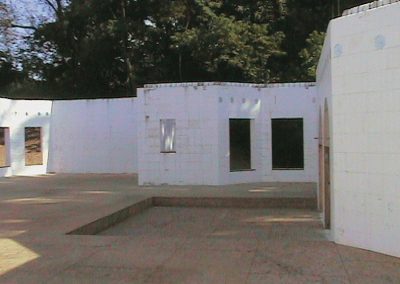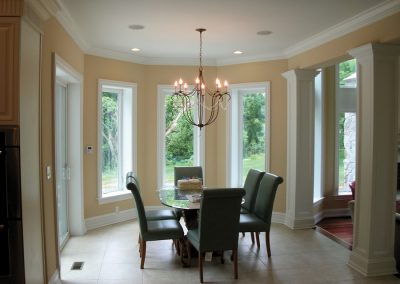
2011 Unlimited Residential
Best in Class
Imagine an attractive, late-model automobile with this unique feature: it would create as much fuel as it consumes, and would never need a fill-up. That type of vehicle would receive unprecedented coverage from the world press, and demand would overwhelm production centers overnight.
Yet across North America, thoughtful builders are designing homes of this type—attractive, spacious, supremely livable homes that produce as much energy as they use.
This home, a net-zero energy house on the outskirts of Baltimore, is the latest to showcase how to make this possible. Bill Naegeli, who provided and stacked the ICF forms for the project, gives most of the credit to the homeowner. “He knew exactly what he wanted,” Naegali says. “He told me from the beginning that he wanted to get as close to net-zero as possible.”
The formula they chose was this: ICF + geothermal + photovoltaics = net zero.
Of course, in practice it wasn’t nearly that simple. The homeowner’s floorplan was ambitious, to say the least. The 11,000 sq. ft. home has 41 corners in the exterior walls, 24 of them 45 degree angles. Naegali says the longest straight run was barely 20 feet. His crew had to deal with bucking out about 85 windows—accomplished with IntegraSpec’s EPS IntegraBuck—including multiple arched openings as well. The most challenging were the 18-foot tall arched windows in great room.
Excavators unearthed other challenges almost immediately after ground was broken. Large boulders and chunks of bedrock lay just beneath the surface. Some of it had to be blasted out. The remaining rock made traditional footing forms impossible to set. So Naegali turned to Form-A-Drain; a footing form, drainage, and radon venting system. The first courses of IntegraSpec ICF were supported on wires over the Form-A-Drain.
“Then we went ahead and graveled inside it,” he explains, “and got our plumbing, insulation, and radiant heat tubes installed. We were able to pour the footer, two feet of wall, and the inside of the slab all in one shot. We probably saved a thousand dollars just in pumping fees by combining those pours.”
The 12,000 sq. ft. of ICF took slightly more than a month to install, and used a tremendous amount of concrete. In total, the home used a staggering 387 cubic yards.
“Concrete is the reason that house is net-zero,” says Naegali. “It’s not just ICFs; it’s the thermal mass inside the walls.” The roof is sprayed with 6 inches of expanding urethane foam.
The heating and cooling is accomplished with in-slab hydronic radiant heat, coupled to geothermal heat pumps and solar hot water panels. Photovoltaics provide power for whatever additional electrical needs arise.
Naegali says one of the neatest things about the project is that it can be duplicated by just about anyone, using off-the-shelf technology and at a reasonable cost. “But you have to have ICF walls, and you have to have the [high-efficiency] roof system. I challenge anybody, anywhere to come up with a more economical, efficient, and effective building envelope.”
Project Statistics
Location: Cockeysville, Maryland
Type: Private Residence-Net Zero Energy Home
Size: 10,750 sq. ft.
ICF Use: 12,300 sq. ft. (all exterior walls)
Cost: Undisclosed
Total Construction: 290 Days
ICF Start-to-Finish Time: 30 Days
Construction Team
Owner: Mr. Poon
General Contractor: GNP, Inc
ICF Installer/Distributor: IntegraSpec Chesapeake
Architect: Phil Gugliuzza
ICF System: IntegraSpec
Fast Facts
Photovoltaics, geothermal heat pumps,and solar hot water
One of the first net-zero homes in the state
41 corners (twenty-four 45º and seventeen 90º)
The longest straight run was barely 20 feet
Multiple arched openings, including two-story tall arched windows in great room monopoured footers with basement walls
Lead story in a trade magazine
Like what you read?
Yearly Subscriptions Starting @ $30



















0 Comments